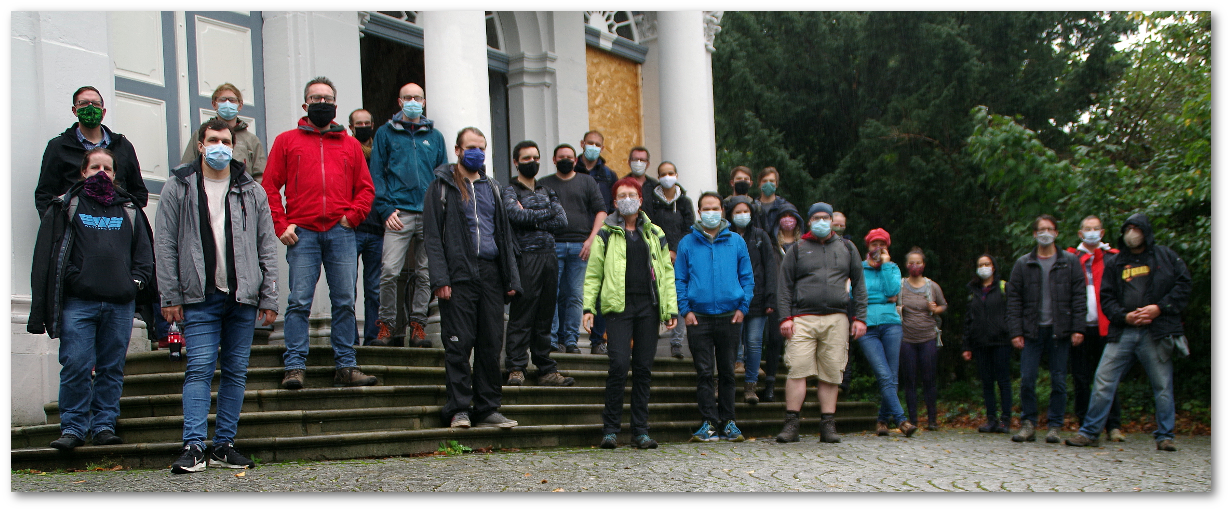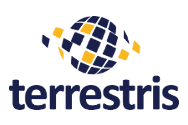The year 2020 offered quite a number of challenges for us at terrestris as it of course did to many others. Our year began with several major new projects starting right at the beginning of the year. This meant that the terrestris team was challenged from January onwards, because in addition to the new projects, we also wanted to serve our existing customers as usual. In retrospect, we succeeded well, and consequently we also want to help our existing and new customers with their specific questions and tasks in 2021.
The emergence of the Corona pandemic and the associated first lockdown in March and April were manageable challenges for us, in contrast to probably many other companies. Our management from a very early stage kept a close eye on the development of the pandemic and made appropriate preparations, so that we were very well prepared when the actual lockdown came. All colleagues – with the exception of an absolute emergency staffing – were able to continue working directly from home without any downtime or transition. Our daily morning meeting as well as all other meetings were moved to virtuality. Appropriate hygiene and distance rules were arranged in the offices. All the necessary changes very quickly became normality for all of us.
Overall, we can say at the end of the year that we have achieved a lot in 2020.
The projects we have worked on this year have massively expanded the technology stack we can offer. In addition to the further development and constant improvement of our open source WebGIS framework SHOGun developers from us have also worked on the basic software of the Masterportal as well as on the geoportal framework “Mr. Map” initiated by the state survey offices of Rhineland-Palatinate, Saarland and Hessen.
We have also improved decisively in the field often referred to as “DevOps”. In close cooperation between our developers and our system administrators, we can – depending on the needs and framework conditions of the concrete project – install fully or partially automated tested code changes on various target systems at the push of a button. For example, it is possible to make changes available on test systems, test them there and then roll out the respective code version in a production environment without any problems and without any manual steps. This, in turn, requires no intervention of a developer. In this way, the frequently changing statuses of a project are continuously available, and sources of error are limited as far as possible.
In the context of a project dealing with the 3D representation of underground data, our 3D client based on Cesium technology was also massively improved. Here, the possibility of uploading own data as well as the use of 3D Tilesets should be emphasised.

3D View in our Cesium Viewer. The data is originally from this publication: Noack, V., Cherubini, Y., Scheck-Wenderoth, M., Lewerenz, B., Höding, T., Simon, A., Moeck, I. (2010): Assessment of the present-day thermal field (NE German Basin)- Inferences from 3D modelling. – Chemie der Erde – Geochemistry, 70, Suppl. 3, 47-62. https://doi.org/10.1016/j.chemer.2010.05.008
Finally in spring, our premium OpenStreetMap map service was launched, for which we were able to win several customers in the course of the year. At the same time, the hardware that had hosted our Free OSM WMS service for 8 years went into well-deserved retirement. This service is also still available after a smooth migration to new hardware.
Our partners at omniscale moved their existing MapProxy-business over to us. This has not only enabled us to win numerous new support customers for us, but also to massively expand our range of services for the development and acceleration of OGC services. So if you are looking for support, please feel free to contact us.
In a common project of mundialis and terrestris called HERMOSA we finally connected the core-technologies of both companies: SHOGun as WebGIs framework was connected to actinia, a cloud-optimized Geoprocessing-Engine. Users can now conveniently start evaluations of remote sensing data in relation to issues concerning the reforestation of degraded areas via a web frontend and view the results in WebGIS as well as use these data for further planning purposes.
All training sessions and workshops that took place during the year were held remotely, which was certainly a new experience for many of us, but also for our customers. The conclusion is that this form of training can be an excellent alternative to face-to-face training. A big surprise for us was the online event FOSS4G-UK, that reached 1,000 registrations from the start on. We were also presented some talks at this event. FOSSGIS in Freiburg, to which we regularly contribute, could still be held as a classic attendance event. For 2021, however, the signs are also pointing to an orientation as a hybrid conference. While the new format FOSSGIS Update will take place as a pure online conference, the planned FOSSGIS will welcome participants on site in Rapperswill and also via live broadcast. terrestris will be involved in both, and very affordable tickets can still be purchased for the event.
All these projects, events and related activities have also contributed to the strengthening of our Team. Our administration team grew by another administrator, our development team was happy about the addition of three experienced developers.
In addition to our usual project approach according to the Kanban method, new agile methods were also evaluated in this area. In some projects, Scrum was used, and in addition, several agile workshops based on the Design-Thinking method were held together with our clients. The introduction of OKR (Objectives & KeyResults) as a framework for an even better achievement of objectives is currently being prepared internally and exemplified by a selected aspect.
Nevertheless, we had to pay tribute to the general conditions due to the pandemic: Unfortunately, we had to cancel our annual summer festival “Bratwurst, Bier & GIS”. Of course, we hope for a new edition in early summer 2021. And our biannual large retreat, which was supposed to take us to the southern Peloponnese this time, had to be postponed to 2021 due to the situation. Instead, a very successful retreat week was held on our premises – of course in compliance with all hygiene and distance rules. During the retreat, we had extensive discussions on overarching issues in various configurations (that’s just what we need to do) and we were also able to work on some more tangible technical aspects:
- MapProxy Architecture and Housekeeping (better administration of issues and pull requests)
- First steps towards a generic SHOGun administration backend with a graphical user interface: https://github.com/terrestris/shogun-admin This should then be compatible with the latest SHOGun versions and customer applications based on them.
- actinia refactoring and Proof-of-Concept for automated user interfaces to single actinia-API’s
- SHOGun basic installation optimisations and improvement of documentation
- We have started to develop an official Docker image (as specified by https://github.com/geoserver/geoserver/wiki/GSIP-192) for GeoServer: https://github.com/geoserver/docker/pull/1
- >A new GeoStyler homepage was created using hugo
- shogun-boot (https://github.com/terrestris/shogun): Optimisation of permission validation (on the database side) and interfaces for paginated queries for all repositories (e.g. users, applications, layers).

Group photo together with the colleagues of mundialis
All together, we can look back on a successful 2020, but with some sadness we realise that we will not be able to celebrate this year together, as we have done in all the years before. But we will certainly make up for that as soon as the situation allows. Perhaps with you at the next Bratwurst, Beer and GIS event in 2021? In any case, we plan to make our expertise in the field of WebGIS with free software – as well as everything else that goes with it – available to our customers in 2021.
